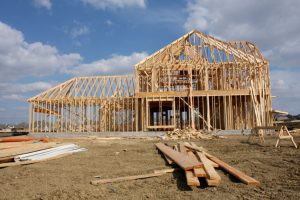
It may not add up to a ‘housing accord’ exactly – but there’s a surprising degree of common purpose between National and Labour in terms of what they want to achieve in housing. Both parties are pledging to build more affordable homes, expand the social housing stock and shelter more homeless people.
We all know that these are outcomes we have to achieve if we are ever to drag ourselves out of our debilitating, shameful and seemingly intractable housing crisis.
But while National and Labour have broadly similar overarching goals, the debate hots up around what politicians identify as the most effective approaches for reaching their goals. Some of the hottest debate, in the media and on the streets, is around the clearly emotive issue of whether or not we should be selling our state houses.
National plans to reduce the role of Government and, as part of the Social Housing Reform Programme, wants to offload thousands of state houses to charities, churches and iwi. Labour, on the other hand, says it would end the state house “sell-off”.
So, it’s presented as a case of to sell or not to sell. And, as with so many pieces in the great housing jigsaw, arriving at the right answer and doing the right thing aren’t as simple as they might seem on the surface.
Let’s look at some of the scenarios that confront you when you are responsible for looking after a mammoth, – 60,000+ unit housing portfolio – some of the headline choices and decisions you will routinely be faced with.
• What should happen with state houses in areas of the country where there is limited demand for them?
Currently in areas of the country where there is an over-supply of state houses, some of the surplus houses are sold to first home buyers. The opposite of this would be that they remain empty. In terms of simple logic (some would call it ‘common sense’), the right thing to do in this instance would seem to be to sell – particularly if, at the same time, you are enabling first home buyers.
• What should happen with state houses when we have an oversupply of one type – eg three bedroom houses – and not enough of other sizes?
The traditional three bedroom state house of the past served a great purpose. But in our communities today we have a much greater mix of family sizes and make-up. Our urgent need now is for many more one and two bedroom properties, and four bedroom plus.
This highlights the major challenge facing any large property portfolio owner, which is to ensure you have the right mix of properties to meet demand. So, depending on the location, it makes sense to sell or redevelop some of these excess three bedroom houses and use the proceeds to buy or develop housing that more effectively matches current demand.
• What should happen with state houses which are past their “used by” date i.e too old and not fit for purpose?
Once again, a sustainable property strategy is driven by demand. If they are in areas where there is demand for state housing, they could be renovated or demolished and new, more fit-for-purpose housing built. If there is no demand in the area, they could be sold and the funds reinvested in those parts of the country where there is high demand.
• What should happen in state houses in areas of high value?
This is another hot potato. Do we continue to hold one house – say, in the range of $2m – which holds just one family in a conspicuously expensive area when, if we were to sell it, we could build three or four in a less expensive area and house three or four times as many families? Your call!
• Should we sell portfolios of housing to support the growth of the Community Housing sector?
This comes back to a fundamental question about whether the government should be the main provider of social housing. That is an issue that goes both to practicalities and ideologies. Or do we follow the trend in some parts of the world, where growth is being stimulated through the community housing sector. These are predominantly church and charity based groups providing a range of specialist support services to people in need – and these days the definition of ’need’ definitely includes housing.
There is no one blanket policy that is going to cut it in such a large property portfolio. A black and white ‘sell or not sell?’ turns out not to shine a lot of light on things! And the problem of turning it into a political football, as attractive as that may be, is that it will almost certainly enhance the risk of not making the most of the large property portfolio the taxpayer owns.
What we need is a clear and transparent master plan so that the individual decisions become much easier.
Rather than contorting ourselves around one or other of the poles – ‘sell’ or ‘don’t sell’ – let’s try to manage our property portfolio in a manner that is both socially aware and business-like. And, since you asked, this is not a case of sitting on the fence. It’s about making sure we get the damn fence built! So:
a. Let’s provide houses that are right for what tenants require.
b. Let’s make sensible decisions for each property – whether it be selling and re-investing funds, renovating, or redeveloping.
c. Let’s have a clear set of objectives about “what success looks like”.
d. If we are selling assets – let’s be clear about our reasons for doing it, when we will do it, and whether we sell at market price or discount the price to achieve a desirable social objective.
So, to sell or not to sell? Well, it depends …